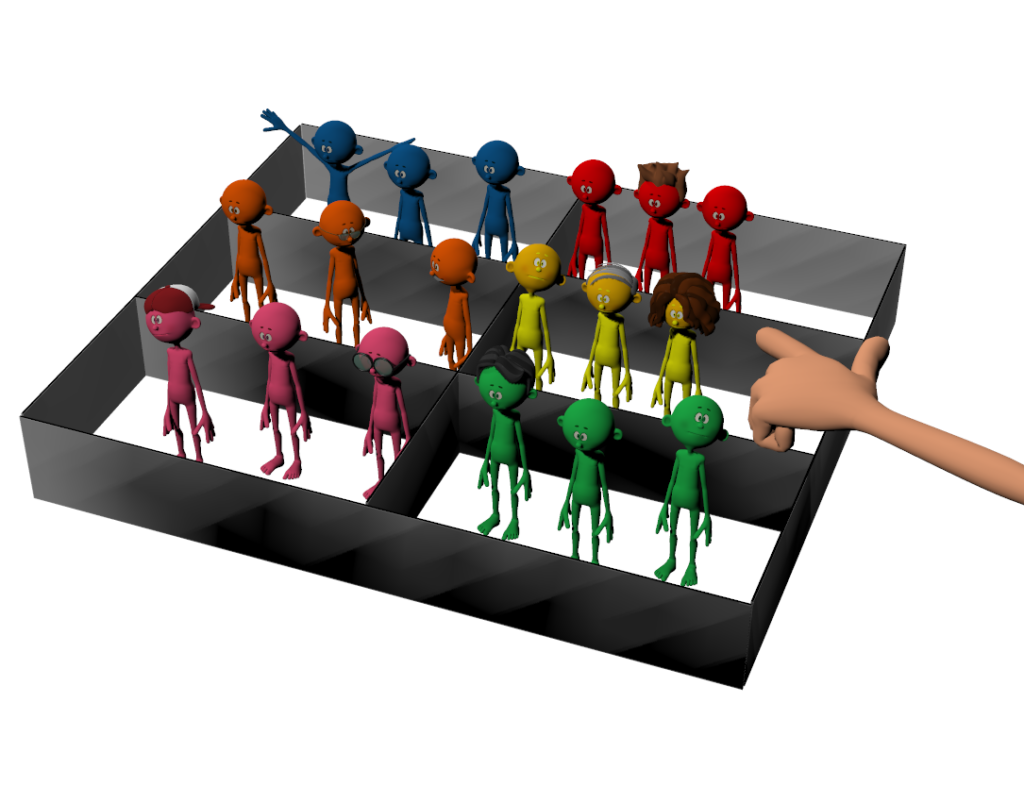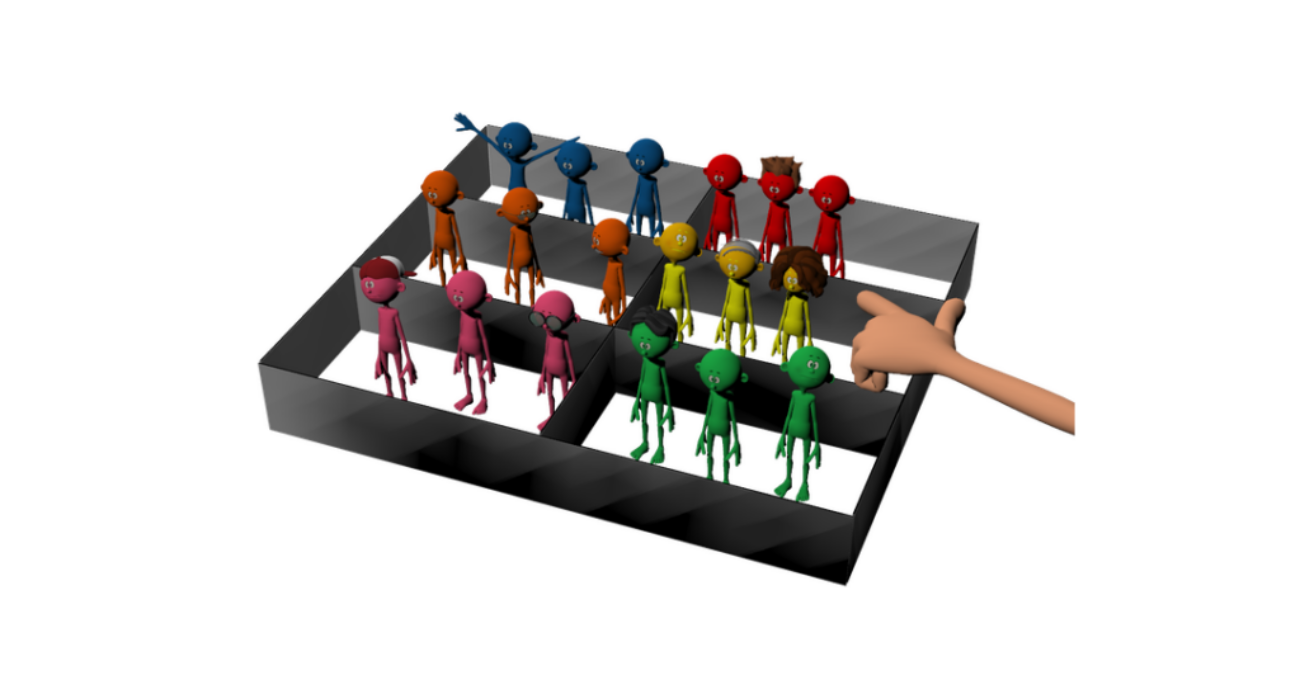Inter..what? More than words
In these blogs I’ve shared situations where I have erred professionally. My weak defence has been that I didn’t know any better at the time! By delving into and contemplating different areas of research, I’ve been able to reflect on and reinterpret many of my experiences – good and bad, and I’ve shared those with my students so that that they might know better.
One thing I’ve thought about recently was how I prematurely stereotyped or categorised people. I formed initial judgements based on appearance, physique, attire, the way someone moved, their posture or facial expressions… I think it was largely subconscious, but I did this with athletes, students, fitness clients, and rehab clients. Most times I was wrong – completely wrong!. I gradually learned that I was better getting to know and understand each individual. Give them the opportunity to show me who they were. Pretty obvious in hindsight!
While I think it has been helpful to recognise and acknowledge this flaw, I still felt I didn’t have a way of understanding and better communicating this. Writing our book on professional aspects of strength and conditioning in 2019, I was introduced to the concept of intersectionality (notice the buzz I get out of words!). Black activist and legal scholar Kimberlé Crenshaw (1989) is credited with coining this term. Her argument was that by characterising individuals on the basis of one characteristic we inevitably discount and marginalise the importance and relevance of their other characteristics. In Crenshaw’s (1989) treatise, she argues that in terms of discrimination, the disadvantages borne by black women are generally considered on the basis of either being black or being a women, seldom as ‘black women’. This, she says, is double jeopardy for black women as they are more marginalised than both black men and white women. So what? Well hold that thought of intersectionality for a moment and we’ll circle back to it.

My second word today is ‘bricolage’ – I love that word. Bricolage comes from the pen of anthropologist Claude Levi-Strauss (not the jean guy), who used bricolage to help explain the concept of entrepreneurship as ’making do with whatever is at hand’. In research and other endeavours, bricolage has been used to describe the repurposing of bits and pieces to formulate effective solutions – basically being creative using different tools. I think I’ve been using bricolage for years, picking bits from here, and bits from there, and seeing how they might apply to my different work situations and contexts. Perhaps we all do this, but I’m comforted by being able to actually hang a label on it. It has helped me to be creative in the way that I do things and it’s encouraged me to look at things in different ways.
While I don’t want to trivialise a tool that has been used to counter harmful discrimination, others have argued that inequality is pervasive, and that imbalances in privilege and disadvantage are an inevitable part of society (Abichahine & Veenstra, 2017; Thomas, 2021). Age, ability, physique, ethnicity, socioeconomic status, education level, fitness, injury history, health, gender, sexuality, employment status – the point is that everyone intersects at different points on each of these factors . Those intersections may mean an advantage or disadvantage in different contexts. Abichahine & Veenstra (2017) explored leisure based activity in Canada, noting that while statistics show that males are more physically active than females and that physical activity is associated with education and income levels, many other determinants are in play. The authors suggest that it is wrong to assume that any particular characteristic is any more important than the others, or to suggest that intersections are simply the sum of the parts. Crenshaw (1989) warns that two or more characteristics may amplify the negative aspects of marginalisation (or increase the advantage offered by privilege).
So the bricolage here for me is being able to take the concept of intersectionality and use it in our everyday physical activity contexts to better understand the people that we work with. I can use it in my classrooms, with strength and conditioning coaching,, or when working with a Green Prescription client. It might help me to recognise that this student, that I think is a real slacker, is actually working a near full-time job, helping care for extended family, dealing with the consequences of three concussions, struggling to keep up with her football training, and can’t find a quiet place at home for study. The non-compliant green prescription client might be overweight and have type II diabetes, but he is also a father and husband, has no link to his biological parents, and leads a highly successful business venture that requires a lot of travel. I see a lack of training effort from the netball centre I’m working with who I really think is past it. An intersectionality lens acknowledges that pundits think she is too old for top level netball at 32, owns a reconstructed right knee, has child care challenges shared with her partner, is part of a busy household, is vegetarian, is supporting a parent through illness, and affiliates strongly with their church group. I cannot solve all of these challenges but being aware of all of these intersectionalities will encourage me to be more empathetic and more importantly be flexible in my approaches.
Through the lens of intersectionality I’m inspired to see things differently. The ubiquitous Physical Activity and Health promotions which assume that people just need to be educated about what exercise to do, or have ways of counting their steps in order to be habitually active. The injury prevention warm ups that have crept into sports that assume injury is the result of not warming up and stretching properly. The Balance is Better campaign that considers early specialisation to be the root cause of drop out from sport. I am not trying to suggest that any one of these assumptions is inherently wrong, it is more to point out that these are not inclusive – they are missing the intersectionalities of each individual. Campaigns like these can’t address the needs of every individual but they strengthen the case for addressing the needs of groups and communities rather than broad brush population approaches. I’m a big believer that behaviours are socially determined, so we need to consider social links that people have. I think that’s great news for exercise professionals because we need well prepared professionals who can ‘get in close’ and recognise, understand and work with the nuances of individuals, groups and communities.
Best, Phil
References
- Abichahine, H., & Veenstra, G. (2017) Inter-categorical intersectionality and leisure-based physical activity in Canada. Health Promotion International 32:691–701
- Crenshaw, K. (1989) Demarginalizing the Intersection of Race and Sex: A Black Feminist Critique of Antidiscrimination Doctrine, Feminist Theory and Antiracist Politics. University of Chicago Legal Forum:1(8); 139 -167
- Kapilashramia, A., Hilla, S., Meer, N. (2015) What can health inequalities researchers learn from an intersectionality perspective? Understanding social dynamics with an inter-categorical approach?. Social Theory & Health 13 (3/4): 288–307
- Mielke, G.I., Malta, D.C., Nunes, B., (2021) All are equal, but some are more equal than others: Social determinants of leisure time physical activity through the lens of intersectionality, 16 July 2021, PREPRINT Research Square https://doi.org/10.21203/rs.3.rs-721083/v1
- Thomas, C. et al. (2021) Seeing and Overcoming the Complexities of Intersectionality. Challenges 12(5) https://doi.org/10.3390/challe12010005
